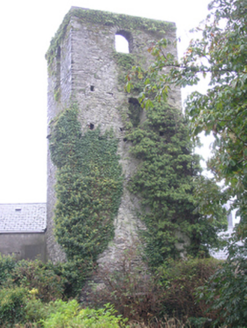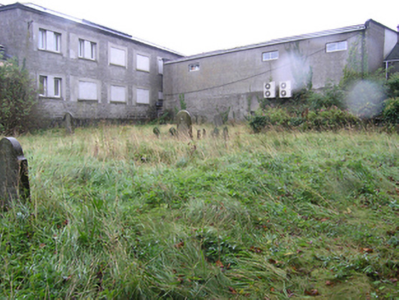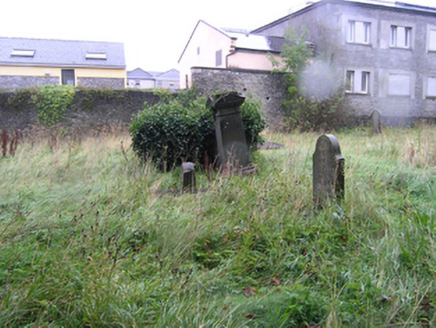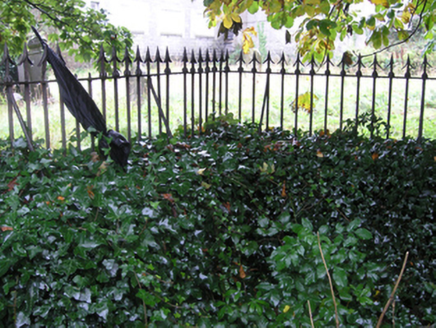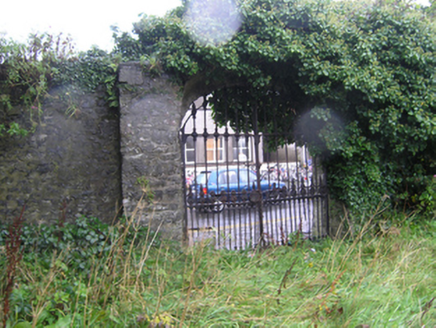Survey Data
Reg No
12504276
Rating
Regional
Categories of Special Interest
Archaeological, Artistic, Historical, Social
Original Use
Graveyard/cemetery
In Use As
Graveyard/cemetery
Date
1540 - 1800
Coordinates
247041, 198431
Date Recorded
29/08/2008
Date Updated
--/--/--
Description
An early modern graveyard and church ruin, in use between c. 1540 and c. 1800, set in the apex between Church Street and Railway Street, walled to the east and south, behind houses and shops on Church Street and also flanked by the former prison to the south. Rubble stone walls and cast-iron entrance gate in the east wall. Now overgrown.
Appraisal
A graveyard, in use between c.1540 and c.1800, partially walled between Church Street and Railway Street. A ruined, three-stage church tower survives in the north-eastern corner. The triangular shaped area around the church is clearly markedon a 1721 map of the town. As it was a plantation town, it would appear that the area had no religious associations prior to the sixteenth century. With the re-location of St. Peter's Church to Main Street in c.1800, the graveyard began to be neglected and a new graveyard developed around the new church. This is the earliest surviving religious site in the town. The church ruin and graveyard with its early gravestones are an important element of the archaeological and social heritage of Portlaoise. A number of notable personalities are said to be buried here including generations of the famous medical family of Jacob, noted clergymen, and the remains of the highwayman Grant, the last man to be publicly hanged in Maryborough in 1816.
